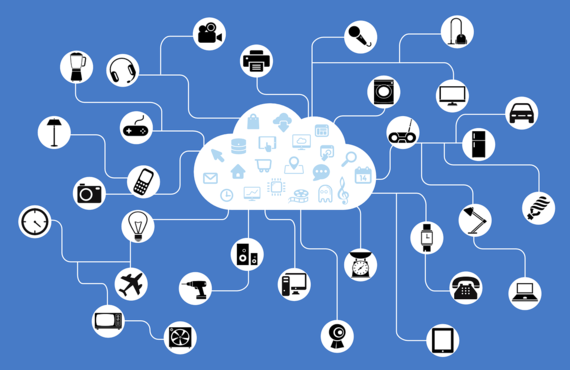
https://pixabay.com/en/network-iot-internet-of-things-782707/
Among today’s tech trends, the Internet of Things – IoT – is right up there as a talking point and emerging market. While the general idea has been around for some time (it was ‘named’ in 1999), it’s only in the last few years that investment, product development and revenue have really accelerated.
The IoT concept is based round the idea that a vast array of devices, products, machines, sensors, tools – pretty much anything you can think of – can be connected via the Internet to collect, send and receive data. As a result, they become radically more useful, giving rise to the idea that they’ve developed into something ‘smart’.
Think of the way our use of mobile phones has changed. Before smartphones came along, the role of the mobile was pretty literal; phone calls were by far their most important capability. Today, making a call has dropped right down the list of things many people most value about their ‘phone’. Most of us now spend way more time using other features and apps – many of which need a data connection to work.
Apply that idea more broadly and you’re well on the way to visualising our IoT future. From the mundane to the mad, connectivity and communication is being built into almost any ‘thing’ you can imagine.
Some of the more quirky examples illustrate the diversity of innovation in this sector really well. The hairbrush, toilet, bed, duvet, dustbin, toaster, juicer and mirror, among many other familiar items, have been re-imagined with an IoT twist. At the other end of the spectrum, connected ‘things’ are appearing across our emerging smart cities, including a myriad of monitors and sensors that measure everything from car parking and lighting to noise pollution and waste levels.
This adds up to the creation of a $1.3 trillion market by 2020, according to analyst house, IDC. But – and there’s always a ‘but’ – while this enormous growth in connectivity is creating a new industry, it brings with it a whole new layer of IT security risk and vulnerability. We are already seeing IoT devices being targeted as the new weakest link in the security chain, either as the point of entry to traditional IT networks, as a tool used to mount attacks or as the target themselves.
The challenge is that all this extra connectivity means there is much more to protect and many more avenues for criminals to exploit. It’s a worrying gold rush scenario – a new opportunity has been enthusiastically jumped on by the a whole range of people, but law makers are lagging behind.
IoT security breaches are hitting the headlines. CloudPets, manufacturer of Internet-connected stuffed toys, suffered a serious breach in early 2017 when the personal information of half a million users was compromised.
An unnamed university recently experienced an attack where its connected light sensors and vending machines were used by hackers to direct traffic and overwhelm target servers.
And last year, Domain Name Server company, Dyn, suffered a major Distributed Denial of Service (DDoS) attack, carried out via a range of IoT devices which themselves were infected by malware. The attack took Dyn offline, and as a result, caused widespread Internet service disruption across the USA and Europe. A vast number of household and digital brands, from Airbnb and Amazon to Starbucks and Twitter were affected.
One of the major concerns among security experts is that there is such a big gap in IoT security in general, that we are only just seeing the tip of the iceberg. IoT security is lambasted by commentators, and has been described as both ‘non-existent’ and ‘a threat to public safety’. As connectivity broadens, and as we become more dependent on smart IoT devices, so the impact of security breaches intensifies.
There is, therefore, a huge burden of shared responsibility across everyone who wants to see the IoT movement continue to succeed. IoT will without doubt deliver enormous, wide-ranging benefits, technical progress and opportunity. But manufacturers, service providers, consumers and governments all have an individual, and collective, role to play in ensuring that this progress isn’t driven off track.
— This feed and its contents are the property of The Huffington Post UK, and use is subject to our terms. It may be used for personal consumption, but may not be distributed on a website.